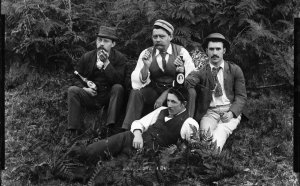
History of pipe smoking
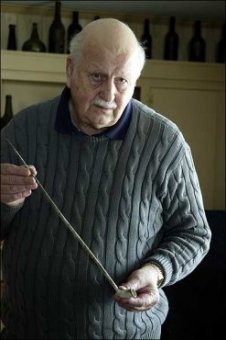
Tobacco Pipes
by Ivor Noël Hume
The author holds a long clay "churchwarden" pipe, which is among the most fragile of eighteenth-century artifacts.
Elizabethans called a pipe a "little Ladell."
Gunsmith Richard Frazier uses a taper to light a later version, with larger bowl and longer stem.
Antiquaries of the 1860s attempted to date clay pipe bowls by their evolving shapes and sizes. Few makers included dates in their marks, however.
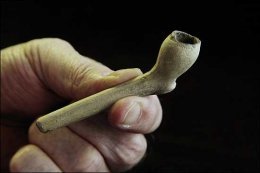 The author found this 1683 pipe in the River Thames. Makers often stamped their initials, though seldom on the bowl.
The author found this 1683 pipe in the River Thames. Makers often stamped their initials, though seldom on the bowl.
An unexpected use for broken pipes. More than 11, 000 fragments were made use of in this ca. 1740 walkway beside Colonial Williamsburg's George Reid House on Duke of Gloucester Street.
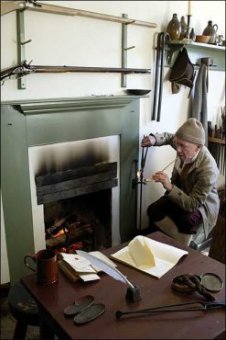 Wig akimbo, a cleric is in his cups in this ca. 1795 woodcut. On such occasions, a shorter pipe stem made for easier handling.
Wig akimbo, a cleric is in his cups in this ca. 1795 woodcut. On such occasions, a shorter pipe stem made for easier handling.
The late Audrey Noël Hume had to measure the size of the hole through every one of the stem fragments from the George Reid House walkway.
In 1992, while searching for Sir Walter Ralegh's Lost Colony on Roanoke Island, North Carolina, excavators found fragments of aboriginal pipes smoked there by colonists in 1585 and 1586. From this small beginning the taste for "drinking tobacco" was born.
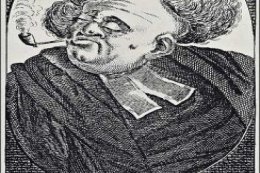 A pipe fragment found at Roanoke.
A pipe fragment found at Roanoke.
A jumble of seventeenth- and eighteenth-century pipes. Though identical to others excavated at Jamestown and Williamsburg, these were found in London.
Archaeologist Al Luckenbach, director of Maryland's Lost Towns Project, shows the author pipes and equipment found on a 1660s pipe maker's kiln site in Anne Arundel County. His is the most important contribution made to the history of colonial American pipe making.
From the Jamestown Exposition of 1909, pipes memorializing the settlement's ruined church tower.
In the eighteenth century, smoked pipes were sanitized in iron cradles called kilns and baked in ovens.
The stems of these English pipes from ca. 1690-1720 measure 11". The Dutch tobacco box is of the same period.
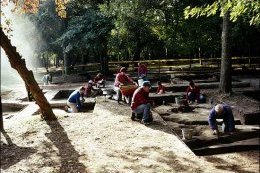
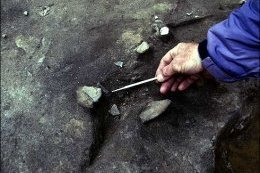
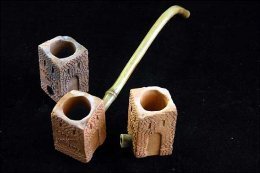
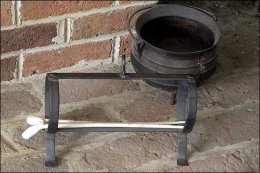
VIDEO REVIEWS



Share this Post
Related posts
History of smoking Bans
This week, New York became the latest U.S. city to forbid smoking in outdoor public spaces, including parks, beaches and…
Read MoreHistory of Copenhagen tobacco
A Canadian Can of Copenhagen Long Cut. Copenhagen is a brand of smokeless tobacco made by the U.S. Smokeless Tobacco Company…
Read More

